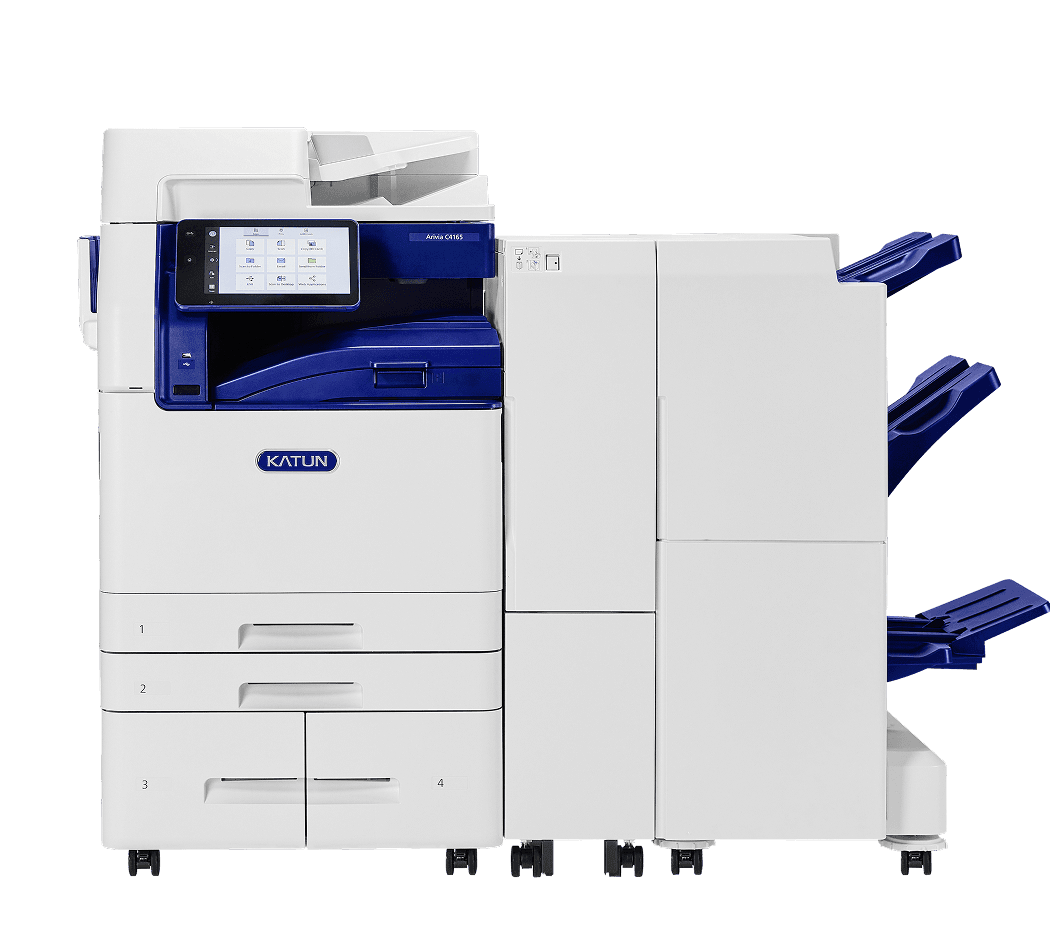In today’s connected world, cybersecurity is no longer a luxury, it’s essential. Think of your office network like a house: you lock the front door (your servers), close the windows (your endpoints), and install a security system (your cloud protections). But if you leave the back door unlocked, your home is still vulnerable. That back door? It could be your multifunction printer (MFP).
Understanding the Risks
MFPs are staples in nearly every office. They print, scan, copy, and email documents, sometimes directly to or from the cloud. While they help us streamline our daily operations, they can also present hidden risks if left unprotected.
Today’s MFPs are smarter and more connected than ever, making them attractive targets for cybercriminals. If not properly secured, they can:
- Store sensitive data on internal drives (e.g., contracts, payroll, medical records)
- Transmit unencrypted data across networks
- Operate with outdated firmware containing known vulnerabilities
- Be exploited through default admin credentials
- Allow unauthorized access or data tampering
- Enable eavesdropping or interception of communication
- Have their audit logs manipulated
Even unintentional mistakes by employees or administrators can create security gaps. That’s why awareness is your first line of defense.
The Cost of Inaction
The consequences of a compromised MFP can be severe. Exposed data, whether it involves employees, clients, or financial information, can result in:
- Legal penalties for non-compliance with regulations like GDPR, HIPAA, or PCI-DSS
- Financial losses due to data breaches
- Damage to your company’s reputation
For industries like healthcare, finance, or legal services, the risks are even higher. A breach caused by an overlooked MFP can quickly escalate into a major incident.
The Good News: MFP Security is Evolving
MFPs don’t have to be the weak link in your cybersecurity strategy. Katun’s Arivia MFPs are designed with enterprise-grade security built in from the ground up.
Key features include:
- TPM 2.0 chips and solid-state drive (SSD) encryption - All data written to the device’s storage is automatically encrypted, protecting it from unauthorized access. Even if the storage is removed, the data cannot be read or analyzed by third parties, including during servicing or decommissioning of the MFP.
- Secure Erase - Batch deletion of data at the device’s end of life adds an extra layer of protection. This process permanently deletes both the encrypted data and its associated encryption keys, rendering data completely unreadable.
- TLS-encrypted network communications - Protects against data breach and tampering by encrypting communication between the device and server or client PC on the network.
- Secure boot and firmware validation - Ensures the integrity of the device’s firmware, preventing unauthorized software or firmware from being loaded.
- Advanced authentication and access controls - System administrators can manage access to specific device functions, such as copy or fax, based on user roles or credentials.
- Secure print release - Ensures that sensitive documents are not left unattended by requiring user authentication at the device before printing.
- WPA3 wireless security and RED certification - Helps prevent attacks, eavesdropping, and data breaches through the device’s wireless LAN port.
- Support for OAuth 2.0 scan-to-email and Microsoft Universal Print - Enables secure authentication for scan-to-email functions and cloud printing.
All of this can be supported by Katun’s KDFM eXplorer platform which provides:
- Secure remote device management
- Two-factor authentication
- GDPR-compliant data handling
- Certifications including ISO 27001 and SOC 2
With Arivia, security is embedded in the device, not added on.
Best Practices for Securing MFPs
Protecting your MFPs doesn't have to be complex. Follow these key steps to get started:
- Change Default Passwords: Replace default admin credentials with strong, unique ones.
- Disable Unneeded Network Ports and Protocols: Eliminate network communication on unneeded network ports.
- Keep Firmware Updated: Regularly apply updates to fix known vulnerabilities.
- Enable Encryption: Protect data at rest and in transit.
- Restrict Access: Apply role-based permissions to control usage.
- Secure Print Release: Require user authentication before printing documents.
- Monitor Activity: Review usage logs for suspicious behavior.
- Dispose Devices Securely: Ensure all data is wiped before recycling or replacing printers.
Security isn’t just the IT department’s responsibility; it’s everyone’s job. It’s important for organizations of all sizes to educate employees, set smart policies, and work with trusted vendors who take security seriously. Highlighting your employees’ role in your network and securing them accordingly ensures you're not leaving a gap in your defenses.
Secure MFPs = Smarter Business
Looking ahead, cyberattacks will become faster, more intelligent, and increasingly automated. AI-driven malware might scan your network for outdated firmware or unsecured devices. A single overlooked device could become the entry point for a network-wide breach. That’s why MFPs must be treated as fully connected IT assets, deserving the same protection as your servers, laptops, and cloud services.
Don’t let your MFP be the back door to your most sensitive information. By securing your devices, you're not just preventing cyberattacks; you're investing in peace of mind, regulatory compliance and a smarter, safer, and more resilient workplace!
Katun’s Arivia MFPs make it easy to get started, with built-in security features, simplified management tools, and a customer-first approach to delivering long-term value. Learn more about Arivia MFPs.
Simplify Your Success
We’re here to help you succeed. Let us be your trusted ally in the ever-evolving print industry.
Get Started
